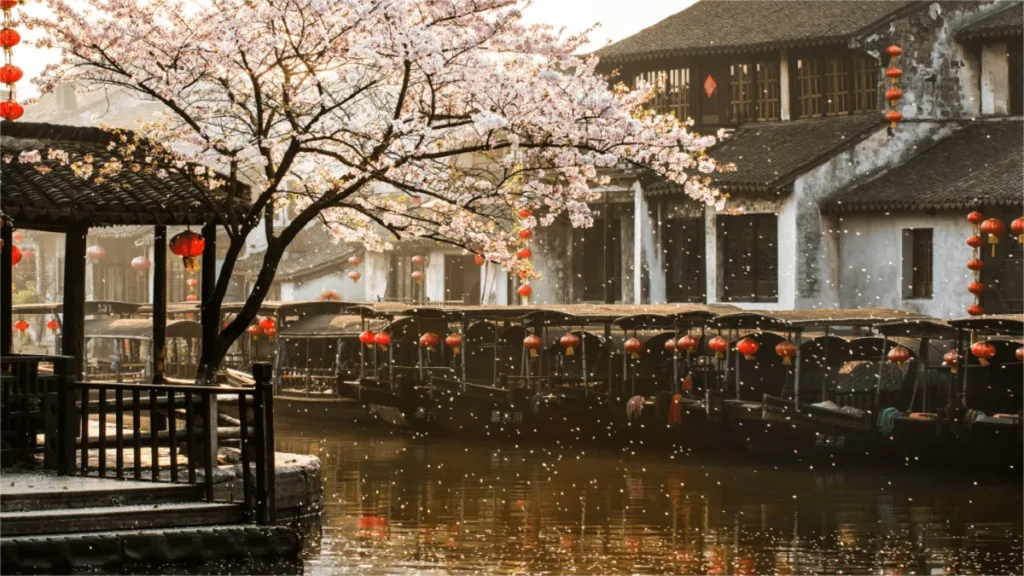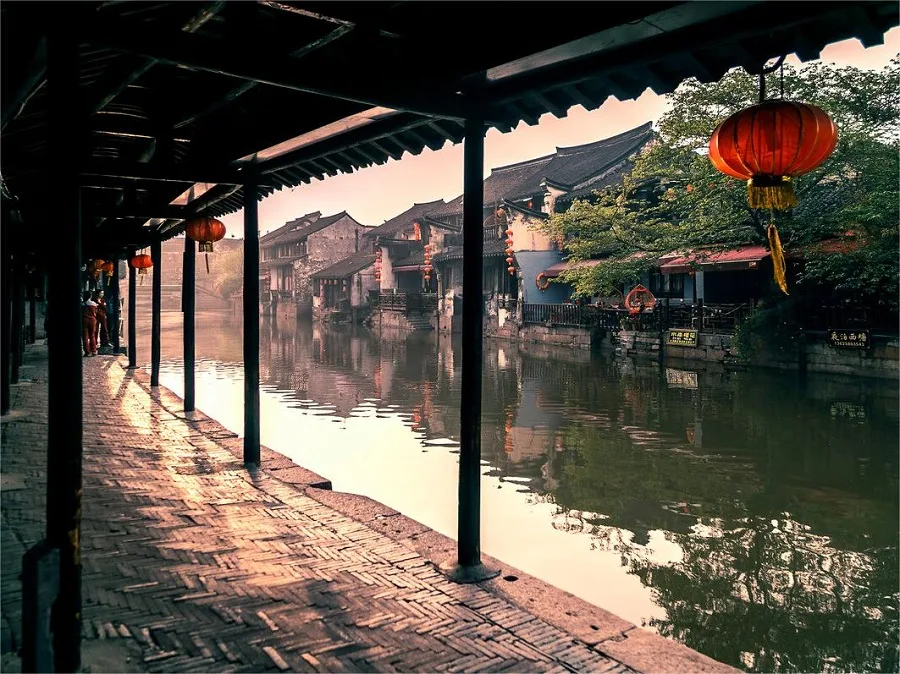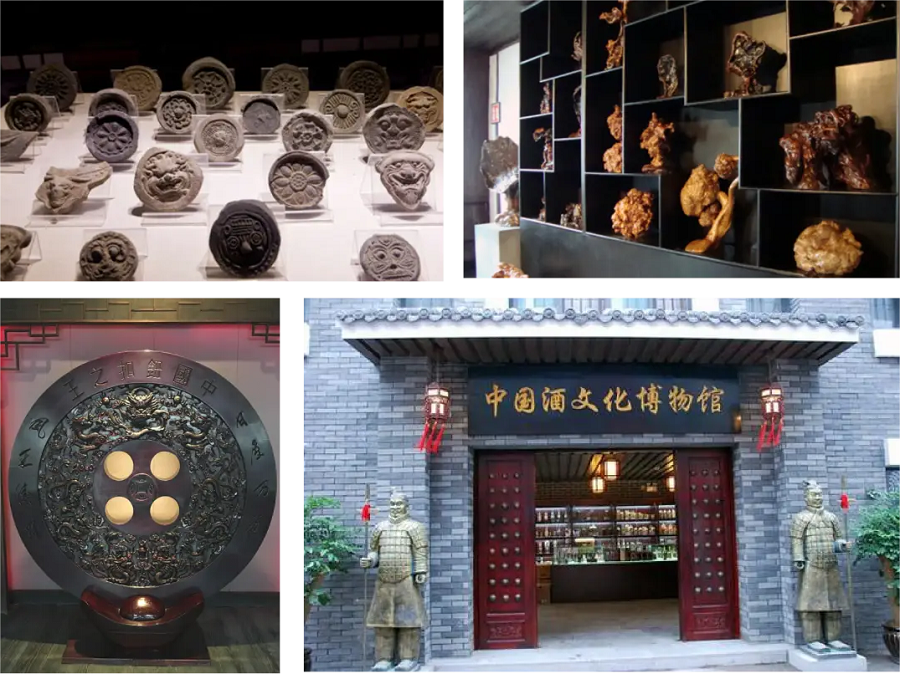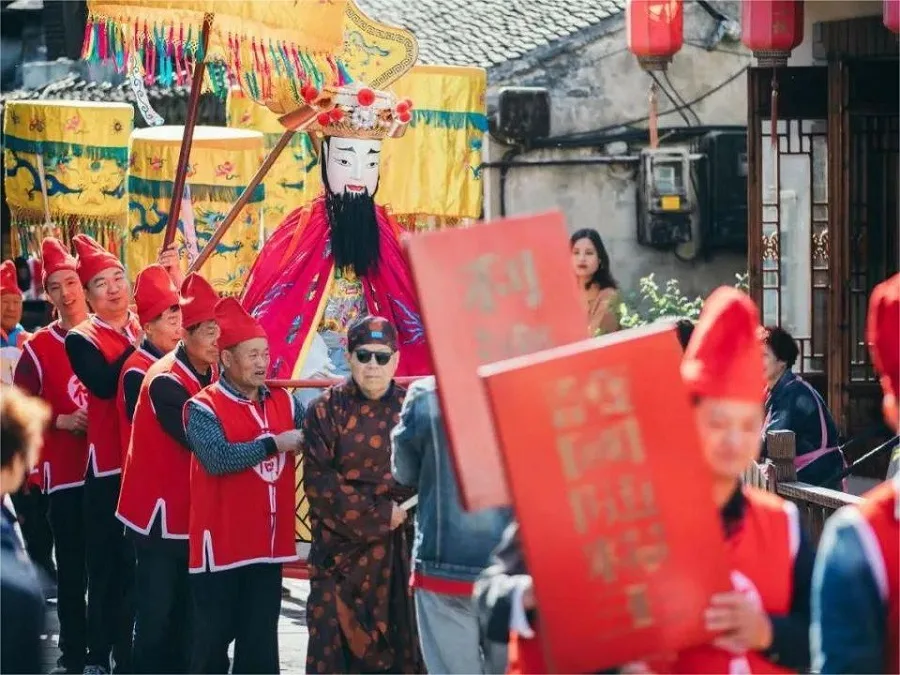Xitang Ancient Town, Jiaxing - Kaartje, openingstijden, locatie en hoogtepunten


Xitang Ancient Town (西塘古镇), situated at the junction of Jiangsu, Zhejiang, and Shanghai in China, is one of the six famous ancient towns in the Jiangnan region. Dating back to the Spring and Autumn Period and the Warring States Period, it was a meeting point between the Wu and Yue states and served as one of the birthplaces of ancient Wu and Yue cultures. The town’s architecture predominantly features black and white colors, exuding a simple yet elegant charm typical of the water towns in the Jiangnan area. With nine intersecting rivers dividing the town into eight sections, and 24 stone bridges connecting these areas, the town boasts a network of waterways and bridges, most of which are well-preserved single-arch stone bridges with wooden beams.
One of Xitang’s distinctive features is its intricate network of alleys, including street alleys connecting parallel streets, water alleys linking the front street with the back river, and side alleys within large residences. These 122 alleyways form the town’s framework, connecting both old and new areas. The highlight of Xitang’s architecture is the over 2,000-meter-long Mist and Rain Corridor, a unique feature along the riverside adorned with benches for visitors to sit and enjoy the scenic views.
Inhoudsopgave
Basisinformatie
| Geschatte lengte van de tour | 1 dag |
| Ticket Prijs | 95 RMB |
| Openingstijden | 24 uur per dag, het hele jaar door |
| Telefoonnummer | 0086-0573-84567890 |
Locatie en vervoer
Xitang Ancient Town is located in Jiashan County, Jiaxing City, Zhejiang Province, at the intersection of Jiangsu, Zhejiang, and Shanghai. It is situated 90 kilometers east of Shanghai, 110 kilometers west of Hangzhou, and 85 kilometers north of Suzhou. Visitors can take a high-speed train to Jiashan South Station and then transfer to bus route 222 or a taxi to cover the remaining 22 kilometers to reach the ancient town.
Highlights of Xitang Ancient Town
Ancient Stone Bridges

Xitang is adorned with nearly a hundred bridges spanning its waterways, each with its unique charm. Among them, Yongning Bridge stands out as an excellent vantage point, offering panoramic views of the converging rivers. Visitors can capture the tranquil and rustic charm of the water town, especially during the quiet mornings. Other notable bridges include the uniquely shaped Songzi Lai Feng Bridge, the picturesque Huanxiu Bridge where visitors can see the layers of green tiles afar, the Five Blessings Bridge dating back to 1901, and the Wan’an Bridge, featured in the movie “Mission: Impossible III.” Many restaurants, inns, alleys, and old houses also bear the footprints of various film crews.
Overdekte corridors

Wherever you stroll in Xitang, you’ll encounter covered corridors (also known as “rain corridors” due to their roofed structure). Typically constructed with brick and wood, these corridors are around 2-2.5 meters wide, providing shade from the sun and shelter from the rain. Alongside these corridors, you’ll find shops selling local specialties, jewelry, snacks, and residential buildings facing the waterway. Some corridors even have benches where visitors can rest while enjoying the view. The stretch of corridor from the Songzi Lai Feng Bridge to Beizha Street is particularly iconic. Xitang’s covered corridors are renowned for their beauty, earning them the nickname “Mist and Rain Corridors.” During the rainy season, sitting under these corridors, visitors can admire the ethereal beauty of Xitang in the misty rain, experiencing the gentle and charming atmosphere of the Jiangnan water town.
Museum Cluster

Xitang Ancient Town boasts several museums showcasing the unique culture of Jiangnan. The Chinese Button Museum presents the development history and production processes of various buttons. The Ming and Qing Woodcarving Museum displays over 250 pieces of woodcarvings representing residential architecture in the Jiangnan region since the Ming and Qing dynasties, including beams, brackets, arches, bird replacements, and lattice windows. The Jiangnan Roof Tile Exhibition Hall exhibits various decorations found under eaves. The Chinese Liquor Culture Museum delves into the history of yellow wine development, its unique flavors, corresponding customs, and offers various types of liquor for visitors to taste.
Seventh Master Temple Fair

Every year, on the third day of the fourth lunar month, the people of Xitang celebrate the birthday of their guardian deity, the Seventh Master. On this day, a grand temple fair takes place. The Seventh Master and his consort’ palanquins are carried out of the Huguo Grain Official Temple, starting from eleven o’clock at night. They follow a designated route through Xitang, with flags waving, drums thundering, firecrackers exploding, and a procession of tents set up along the way for the Seventh Master and his consort to rest and receive offerings. The procession returns to the temple the next afternoon, and grand operas are staged in the temple, continuing for three days. Almost the entire town participates in the festivities, with lotus dances, yangko dancing, dragon dances, and lion dances filling the streets with excitement. The third day of the fourth lunar month has become the largest folk festival in Xitang, attracting visitors from far and wide to join in the jubilant celebration.
Jiaxing bezienswaardigheden, Historische plaatsen in Zhejiang